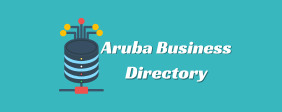How Often Should You Clean Your Email List?
The answer is: as much as possible.
You can start at three months, but if you have a large list and you’ve never cleaned up your email list, now is the time to start.
The faster the list grows the bank of russia said that it would monitor the more often you need to clean it up.
Before you start cleaning your list, check for hard and soft bounces
There are two types of bounces in email marketing: soft bounces and hard bounces.
- A soft bounce indicates a temporary delivery issue. Your email service should try to send the email again and will most likely succeed.
- However, a hard bounce is a bounce sales navigator specific filters that never gets through. The email address is wrong, the domain no longer exists, or the email server has blocked delivery.
Many email service providers will automatically remove hard bounces. Others force you to initiate an email list cleanup to clear out the addresses.
Send re-engagement email campaigns targeting inactive subscribers
Before you clean your email list, you can buy lead filter out subscribers who are no longer active. They no longer open or interact with your emails now, but they used to do so.
Send them a re-engagement email drip campaign to draw them back in. In the first email, ask them if they still want to hear from you.
Allowing them to click a “yes” or “no” button simplifies the process.
Remove subscribers who clicked “No” and lure those who clicked “Yes” back to your business by offering valuable information, incentives, and discounts. Nurture them back into the funnel so they’re more likely to convert later.
Best Tips for Cleaning or Purge Your Email List
If you’ve never tried cleaning your email list, now’s the perfect time. We’ve compiled our best tips below to make sure you’re thorough.
1. Start cleaning out your most active email lists — but don’t forget the others
Always start with your active lists — the ones you frequently hear from. If you took our advice and segmented your lists, you probably have several different lists, so approach them systematically.
2. Start cleaning up duplicate email addresses
People often forget they’ve signed up for an email list. Then, they come across the site again and sign up a second time.
Remember what we talked about ROI? Duplicate email addresses reduce your ROI. Remove duplicates so you don’t send duplicate messages and your email list doesn’t remain oversized.
3. Find “junk” email addresses and remove them from your email lists
You probably know by now how to identify a spam address. Even as a consumer, you’ve probably received many emails from fake addresses.
The following random, made-up examples provide some insight:
